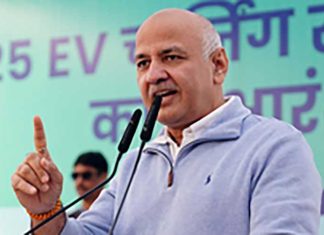New Delhi, Oct 9, 2024
The University Grants Commission (UGC) has decided to facilitate the start of the Apprenticeship Embedded Degree Programme (AEDP) in universities.
UGC has also drafted guidelines for offering the AEDP by higher educational institutions (HEIs), which will be open for public consultation and stakeholder comments.
UGC Chairman Professor M. Jagadesh Kumar told IANS that the draft UGC guidelines for the AEDP is a significant step towards enhancing the employability of our youth.
“Students acquire experiential learning alongside theoretical knowledge by formally embedding apprenticeships within degree curricula, equipping them with the competencies employers seek. We urge all eligible higher education institutions to take advantage of these guidelines and offer AEDP programmes to their students,” said the UGC Chairman.
He added that this will be uploaded soon on the UGC website for stakeholder comments.
“Once notified, Higher Education Institutions can launch AEDP programmes starting from the January-February 2025 academic session,” he said.
Kumar said that as per the draft guidelines in undergraduate programmes by the UGC-recognised HEIs, meeting specific requirements, such as, desired NAAC accreditation score or NIRF rank.
“It will focus on enhancing employability, for guidelines aim to improve the employability of undergraduate students by integrating apprenticeships into their degree programmes. AEDPs combine classroom learning with experiential learning/on-the-job training (OJT) in a structured manner. It will also focus on outcome-based learning and stronger industry connect,” Kumar said.
Kumar said that the draft guidelines will also focus on credit and duration, adding that the guidelines provide complete flexibility in scheduling apprenticeships from the second semester onwards to the maximum 50 per cent of the duration of the programme with a single internship stretch of at least one semester, curriculum design and credit mechanisms for credit transfer as part of the degree programme.
“The credit system is established based on training hours, (Credits as per National Credit Framework; 30 hrs training = 1 Credit. 1-year apprenticeship training = minimum 40 credits),” Kumar added.
He said that the guidelines outline a comprehensive assessment strategy involving evaluation by the industry, faculty mentors and the HEI, adding that the guidelines enable payment of stipends to students, depending on whether the AEDP is offered through the NATS or as per the Apprentices Act, 1961 directly with the industry.
HEIs are expected to monitor the progress of students after completing AEDPs to assess the effectiveness of the programmes. The roles of various stakeholders, including the Board of Apprenticeship Training/ Board of Practical Training, HEIs, industries, and students, are clearly defined. The guidelines also outline the consequences for HEIs and industries that violate the provisions,” Kumar said.
As per UGC, the draft guidelines mandate a tripartite agreement between the HEI, the industry/establishment, and the student. This ensures clear roles and responsibilities.
The draft guidelines emphasise comprehensive assessment and effective monitoring. Enabling skilling in academics by formally recognising the value of apprenticeship training in the academic context. The draft guidelines promote post-training tracking.(Agency)



































































































